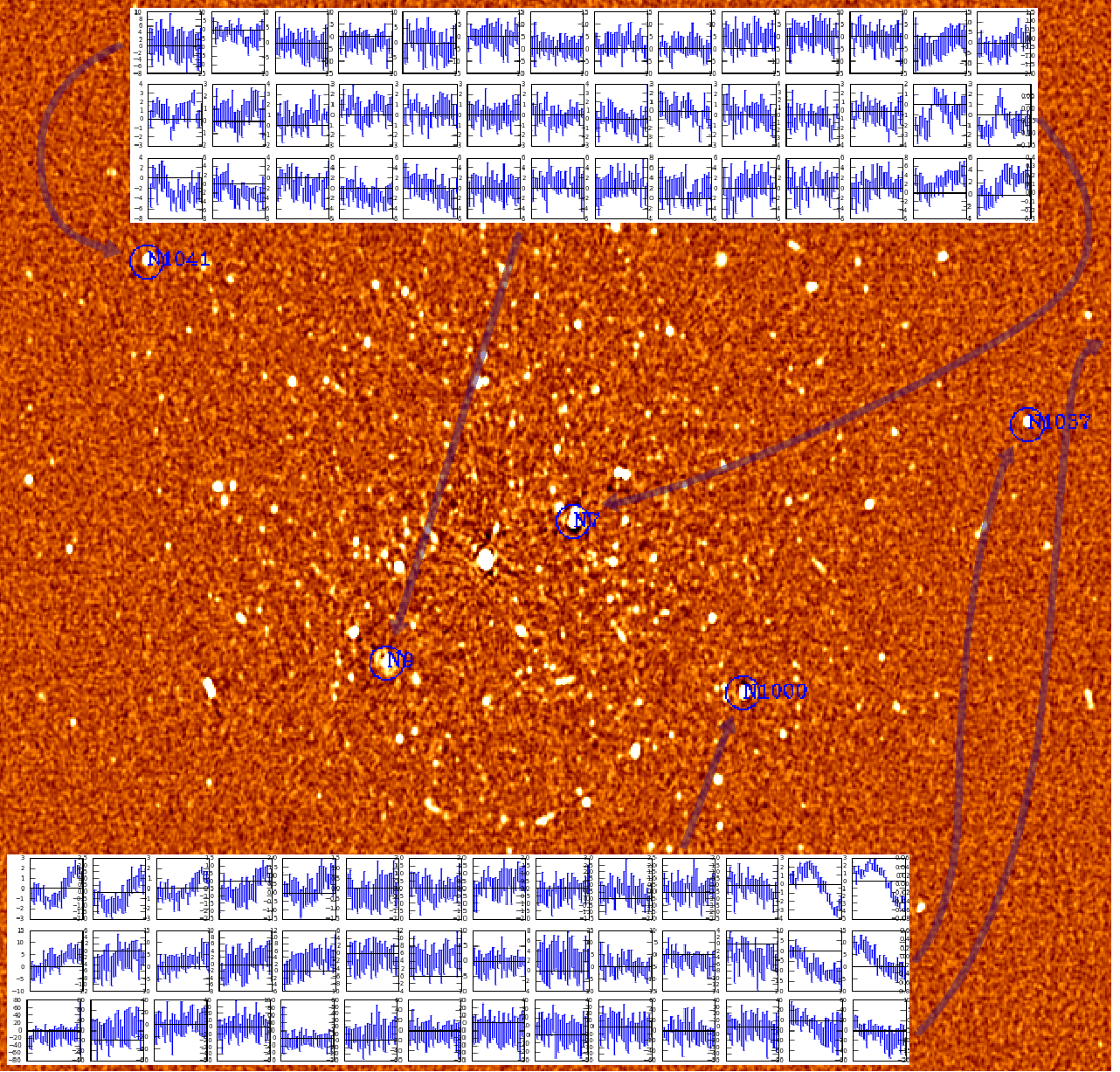Daily Image
23-02-2010Direction-Dependent Effects: Caught in the Wild!
| Submitter: | Oleg Smirnov |
| Description: | In a previous image (15 feb), we have shown how a WSRT image of 3C147 was improved (w.r.t. regular selfcal) by solving for source- and antenna-dependent differential gain terms. While the aesthetic benefit to the final map is undeniable, it is a legitimate question whether these solutions really "mean" anything in a physical sense (as opposed to being simply extra degrees of freedom in the model.) One way to answer this question is to look at the time-frequency behaviour of the solutions. In the case of 3C147, in addition to regular selfcal, we have solved for an independent differential complex gain parameter per source, per feed, per antenna, per band, per 30 minutes. This was done for 6 off-axis sources (one is out on the first sidelobe, and not visible in this map.) The plots show the mean and standard deviation of the phase solutions across 8 bands as a function of time; each row corresponds to one source and 14 antennas. (Amplitude solutions -- not shown here -- demonstrate broadly similar behaviour.) The full plots make for fascinating viewing. The large degree of continuity in frequency, time and space (that is, antenna position) proves that we are looking at a real physical effect. Neighbouring antennas show similar patterns, with a strong hint of antisymmetry towards the two ends of the array and (somewhat weaker) in the E-W direction across the field. This points to large scale structure such as the troposphere or the ionosphere being responsible for much of the off-axis error in this particular observation, rather than local (antenna-specific) effects such as pointing or beamshapes. Even more importantly, this result proves that we can get meaningful solutions for direction-dependent effects using even relatively weak sources. The six sources used here are 1000~30000 times fainter than the dominant source in the field, and only 30~1000 times above the single-band image noise. This is very encouraging news for current and future wide-field instruments such as LOFAR, APERTIF, SKA, and the ongoing studies in aperture arrays. With most WSRT observations, DDEs are a significant complication. Nevertheless, the wide fields and "interestingly" behaved beam patterns of future instruments will make for some far more severe off-axis effects. To calibrate these instruments accurately, we will need a sufficiently dense network of "beacon" sources that can be used to measure the DDEs. The 3C147 result suggests that potential beacons need not be as bright (and thus rare) as we had feared. What may be a luxury problem for the WSRT will be just another day at the office for the SKA! |
| Copyright: | copyleft |
| Tweet |  |
